The Japan Country Wide JR pass is the one we are going to discuss in this post. This flat-fee pass grants users unlimited rides on all JR trains all over the country (there are a few exceptions, read on) which include selected bullet trains for either 1, 2 or 3 weeks. On the previous post, we’ve talked about the value of the pass. This time, let’s go deep into the details.
Is It worth It?
Most of the time YES! However, there are situations that you will not need a JR nationwide pass. I've put up an article to help you decide.Who Can Buy One?
Strictly tourist only, those visiting Japan for less than 3 months.If you are a foreigner studying, living or working in Japan or even just visiting Japan for exchange programs/research/business purposes, you are not eligible to buy one.
The Types of JR Pass
You have 2 choices: ordinary and green car.Green cars are the “Premium" cars that offer larger seats with more leg room and better onboard service (for example charging ports, hot towels, free beverages, radio set...), hence, a green car pass cost a lot more than an ordinary pass. Due to that, the green car is always less crowded.
Question:
Do I need a green pass to travel comfortably?
- No. We actually find the leg room and size of the ordinary seats sufficient. Charging port is also available in some ordinary cars. The photo below are mine, traveling with a ordinary pass.
- However, in certain peak travel months (April, May, June, July, August, November), you might want to have one to escape the crowded ordinary car.
How Much Do Children Pay For The Pass?
Unlike many other western countries, apparently a 12-years-old is considered adult in Japan (that was what I’ve been told at the counter). For children aged 6-11, you’ll pay for a children ticket, which is half the adult price. infants aged 5 and below do not require a ticket to board the train but they will have to sit on an adult’s lap because they are not entitled to a seat.Validity Period
7, 14 and 21 days JR passes are on the market. The Japan Rail Pass works on calendar days (meaning midnight to midnight), not 24-hour basis.For example:
- If you start a 7-day pass at 9 pm on day 1, it will expire at midnight at the end of day 7 rather than at 9 pm on day 8. So in this case scenario, you will lose 21 travel hours. Ideally, it makes sense to activate the pass (by passing through the first gate) as early as possible.
However, If you happen to be on board of a train at midnight of day 7, your pass will remain valid until the end of your journey (the moment you pass the ticket gates in your final station). That being said, you can still transfer trains (only slow trains) after midnight. However, you cannot transfer to a shinkansen (because to get to the Shinkansen station, you need to exit the JR ticket gate, that will make your pass invalid). You should also avoid express trains unless you are willing to pay the express supplement fee.
Valid rides
✅ JR trains nationwide except (see below)That includes shinkansen, limited express, express, rapid and local trains. All the way from JR Kyushu up to JR Hokkaido!
✅ Airport train
- Tokyo monorail connecting to Haneda Airport
- Narita Express that links Narita Airport to Tokyo, Shinagawa, Shinjuku and Ikebukuro stations
✅ JR Ferry (return trip) to Miyajima
✅ Some non-JR trains, includes:
These are private train journeys needed to access isolated JR lines (usually in remote areas). However, JR pass holders may only get on and off at stations that provide a transfer to JR lines.
For example:
- Aoimori Railway between Aomori, Noheji, and Hachinohe to access the JR Ominato Line to the Shimokita Peninsula.
- IR Ishikawa Railway between Kanazawa and Tsubata to access the JR Nanao Line to the Noto Peninsula.
- Ainokaze Toyama Railway between Toyama and Takaoka to access the JR Himi Line and JR Johana Line.
✅ Local JR buses
- Yamaguchi - Hagi
- Kyoto Station - Ryoanji - Takao
- Kanazawa Station - Kenrokuen
- JR buses to Lake Towada
- JR tourist loop bus in Hiroshima
- JR local bus to Kusatsu Onsen
- JR city buses around Sapporo
The JR Pass Is NOT Valid On:
❌ All private lines except those to access isolated JR trains (see above)JR pass cannot be used on subways or city buses.
❌ Shinkansen Nozomi and Mizuho. trains along the Tokaido/Sanyo Shinkansen
The Nozomi and Mizuho are the fastest trains along respective lines (the Tokaido/Sanyo line and Sanyo/Kyushu line). As alternatives, JR pass holders should use Hikari instead of Nozomi and Sakura instead of Mizuho along the same line. Hikari and Sakura stop at more stations but only slightly slower than the invalid trains.
Important Note:
- An upgrade to Nozomi or Mizuho is not possible, so be careful not to board them by mistake. You’ll need to pay the full fare.
❌ Some JR trains
There are some JR trains that use some part of private tracks. In this case, JR pass holders will have to pay the fare of the private section.
❌ Special Compartments
Especially when you are traveling on an overnight train, you’ll only be assigned to the ordinary cart that resembles budget dorm beds (without the mattresses). Hence, traveling in such trains isn’t pleasant unless you pay to upgrade to special compartments like berths. You can see how my brother looked like traveling on the sunrise seto... not fun.
So, please get a berth! It looks way more comfortable.
❌ Some Suburban Trains that has “Liner” in their names
Not all “Liner” trains require liner tickets. For example, Marine Liner, Seaside Liner, and Ishikari Liner are fully covered by the pass. Only a dozen of suburban "liner" trains on the JR network requires a special ticket.
Confusing, I know. On the bright side, these liner trains are targeted at suburban villagers, so foreign tourists are unlikely to use them. But if you are like me, love to venture off the beaten path, get ready to pay.
❌ JR Highway buses
Please be aware that the pass is not valid on any highway buses anymore (It used to before spring 2013).
What Else is Included in The Japan Rail Pass?
- Free Seat Reservations on all JR trains.
- Discounts at JR affiliated hotels
- JR affiliated hotels are those that can be found near or even inside the railway stations.
How to Purchase A JR Pass?
Heres a catch: it's most convenient to purchase the pass online or from a travel agent outside of Japan.I ordered mine through Klook (a certified online JR pass distributor). Here is a detailed step-by-step explanation of how to do it (I recommend buying at least 2 weeks ahead to have it safely delivered). Then, you will be sent an exchange order (via mail) that has to be exchanged to the actual JR pass inside Japan. You can do this within 3 months of the purchase date.
Exclusive discount for MHF readers: use the promo code KLOOKMHF to get RM15 off!
It is also possible (on some trial basis) to purchase the Japan Rail Pass at selected airports and stations inside Japan. However, I do not recommend doing this because the pass available within Japan is more expensive (at least 4000 Yen difference because you’ll pay the premium).
How to Exchange for an Actual JR Pass?
To exchange it, you’ll have to go to the JR Pass counter at designated major JR stations, show your passport (photocopies are not accepted) and fill out a form.During the process, you’ll be asked when do you wish to start using the pass. You don’t have to start using it right away, instead, you can select any date within 1 month (from the day you exchanged your pass) as your starting date. However, once the actual pass is issued, the starting date cannot be changed.
Before you leave the counter check the dates, your name and other details (it must match your passport).
Important Note:
- The pass is not transferable, so only the person named on it can use it. On rare occasion, you may be asked to show your passport to confirm ownership of the pass.
- The pass can’t be reissued if it got stolen or lost.
How to Use the Japan Rail Pass
Step 1: Locate the JR StationDon’t confuse the local metro station with a JR train station. JR stations are usually some (walking) distance away from the metro. Don’t worry, they are usually very easily identified ( with a huge green or blue “JR” sign). If you are looking for the Shinkansen station, it is located inside the JR station, usually at the far end.
You might realize there are sometimes “Shin-“ in front of a station name, for example: Shin-Osaka and Shin-Kobe. So don’t get mixed up with regular stations. Shin stations are newer stations built to accommodate the Shinkansen lines.
Step 2: Pass through the JR/Shinkansen Gate
You do not need a ticket to pass the gates except when you get a reserved seat (free with the JR Pass).
JR pass holders do not use the automatic turnstiles, they’ll have to go through the manned gate and simply present their rail pass (showing the validation dates) to the staff. In some cities, the manned gate is just a small window beside the automatic gates, while in others, the manned gate is located inside a big office that has a "Rail Pass" sign at the door. On rare occasions, pass holders can be asked to also show their passports.
The staff outside of major cities are a lot less stringent. In many cases, we just have to flash the pass (showing dates is not mandatory). In some really rural area, they don’t even have a gate… all you have to do is to board the train and wait for the conductor (if any, lol).
In case you have not done your research and you have zero idea of how to get to your destination, this is the time to ask an officer for advise. He will proceed to print you a route recommendation slip that looks like this:
Note:
- When passing through the first ticket gate with a JR pass, you need to get it stamped (activation of the pass).
Step 3: Look for your platform
After passing the gates, look at the big screen to know which platform to go to (or simply ask the station staff).
When you arrived at your platform, check the signs again to reconfirm. Simple!
Step 4: Look for the right carriage
You can do this even before the train arrives. Simply look at the electronic board and it will tell you the location of the reserved or non-reserved carriage. Feel free to make your way to that part of the platform right away (Just follow the signs on the floor/ at the railing).
With a reserved seat ticket, you can only sit on your assigned seat in the reserved car. Without one, you can sit anywhere in the non-reserve seat car.
Non-reserved car is usually located in the 1st-3rd or 7th-8th cars (check the board) and a queue usually forms far before your train arrives, so let’s be civilized. JOIN the queue! The green tiles on the floor show people how should the lines form.
Step 5: Board the right train
Although Japan is extremely dedicated to schedules, there are chances for a slight delay (It happens once in a blue supermoon.) Thus, arriving and departure time can't be the only aspect to look at!
Here is a check-list to help ensure that you board the right train (I'll use my ride to Nagano as an example):
- Company of the train (must be JR/Shinkansen): Shinkansen
some major stations have private lines passing by, so it's important to confirm that you always board a JR train.
- Name of the train: Asama 617
Kodama? Hikari? Sakura? Asama? Be careful not to accidentally board Nozomi or Mizuho.
- Line of the train: not shown here but you have 3 out of 4 info, its good enough.
- Last station (direction): Nagano
About Seat Reservations
On most trains, seat reservations are optional. However, I highly recommend getting your seats reserved for popular shinkansen journeys (just for peace of mind).There are also a small number of trains which seat reservation is mandatory as they only carry reserved seatings. Hence, please always double check before boarding a long distance train especially shinkansen, joy trains and overnight trains.
The free seat reservation feature is also useful when you would like to have a particular seat on the train. Some trains are famous for its unbeatable view along the tracks! I recommend sitting on the right side when traveling south-west out of Tokyo (see Mt Fuji!)
To do so, just show your JR pass to the staff at the ticket office. You might need to fill in a simple form stating your preferred boarding time and so on, but this is not always the case. For some JR eastern trains, seats can be reserved online.
The staff will then put a stamp on the reservation column on your JRpass and issue you a ticket like this:
About Route Planning
I found Hyperdia.com to be the best and most trustable resource to look up timetables and itinerary. You can refer to this post for the full tutorial:If you need help with your itinerary, here are some 1-week trip suggestions that would help maximize your pass!
Most popular: Tokyo- Kyoto- Osaka
Off the beaten path: Osaka- Hiroshima- Kumamoto
Ready to buy a JR pass for your next visit? Click the banner below:
Here is an exclusive discount for MHF readers: use the promo code KLOOKMHF to get RM15 off!
Here is an exclusive discount for MHF readers: use the promo code KLOOKMHF to get RM15 off!
-----------------------
Follow me on Instagram if you would like to see more photos!
📌For more travel tips, like Eat Love Travel Breathe with Miss HappyFeet.
📌Subscribe to the monthly newsletter for exclusive travel deals, tips, free E-books, monthly giveaway and travel coupons!
----------------------
Thank You for Reading!
This post is made possible by Klook.
As always, it is based solely on my honest opinion or personal experience.





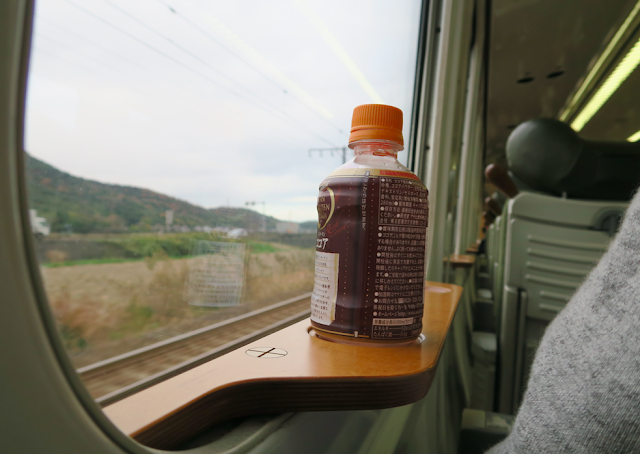

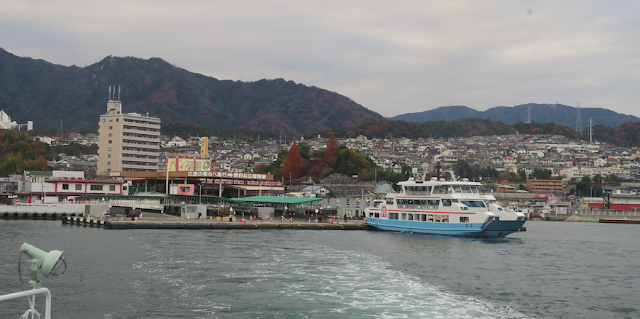


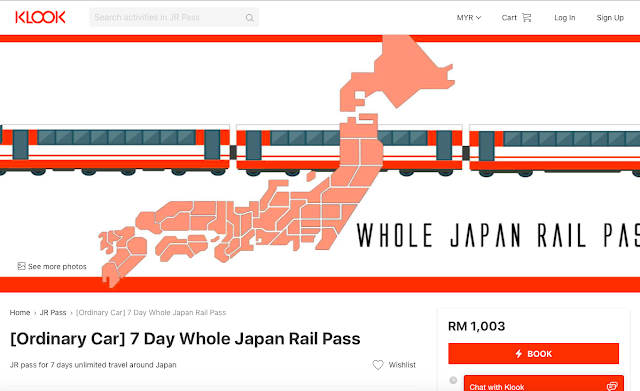


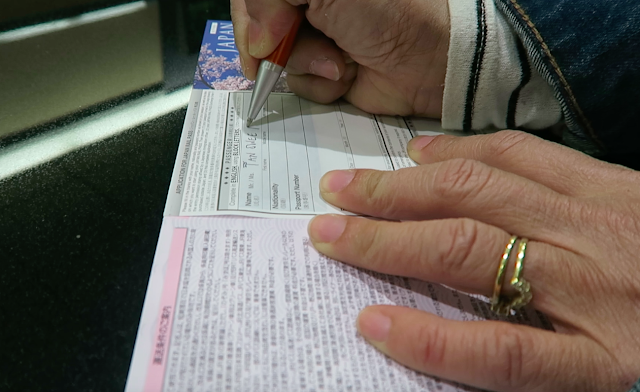





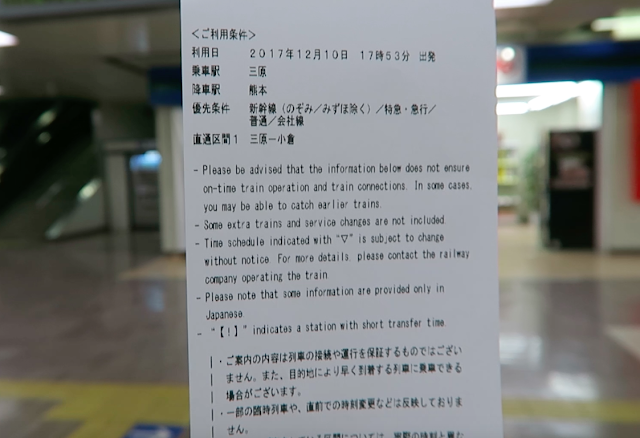




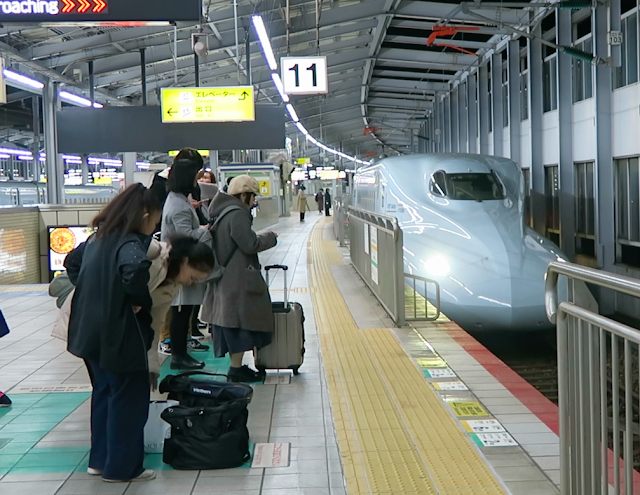









No comments:
Post a Comment